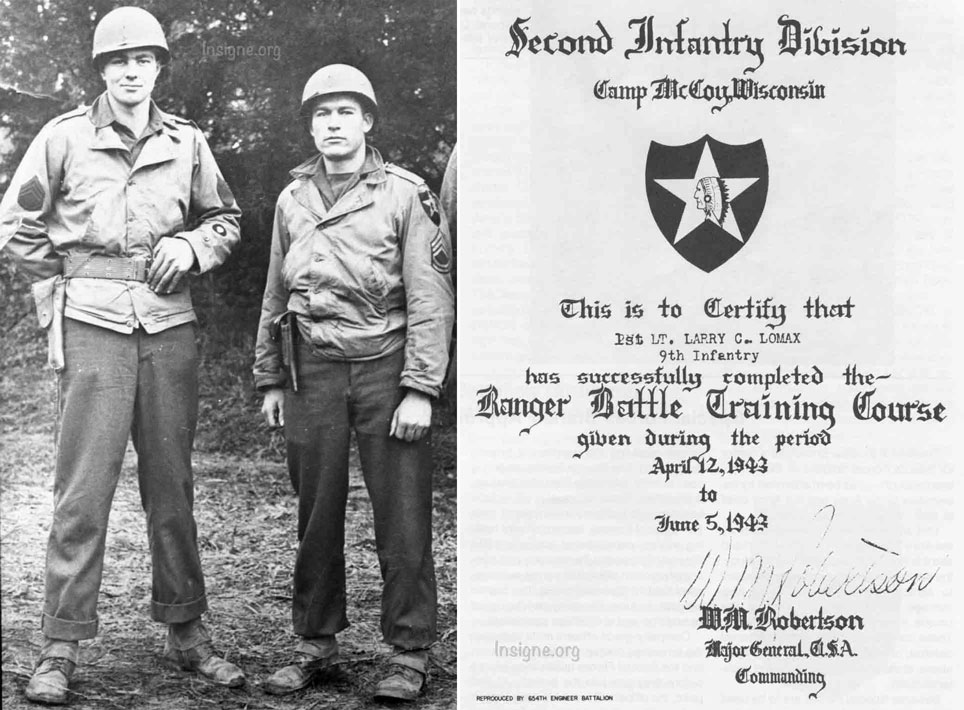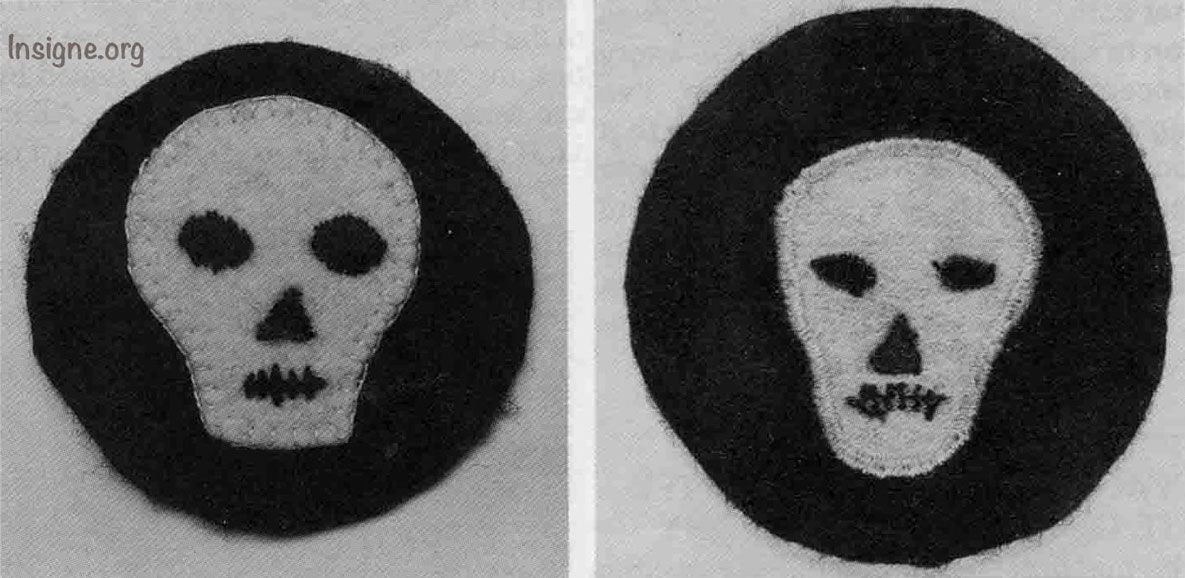|
|
The 2nd Division Rangers by Les Hughes ©1987 by author |
|
|
|
The
following, in essence, is an article of mine that was published in 19871.
All photographs in the publication in which it appeared were, at that
time, black and white, and images of insignia were obtained by
conventional photography. In reproducing the content of the article for
this website, I have had to rely on the original imagery, which, by
current standards, is rather primitive. Given the fact the insignia that
are the subject of this article are black and white, such imagery is not
as big a handicap as might otherwise be the case. In
the mid-1980s, a local collector of militaria who knew of my interest in
insignia, called to tell me about a conversation he had had with a
gunsmith who lived in our community. The gunsmith, a veteran of the 2nd
Infantry Division, told him that some of the men in his unit had worn a
patch depicting a skull and crossed bones during the Second World War.
What, my friend asked, did I know about the patch? I suspect that my
stock as a patch expert dropped considerably when I pled ignorance. I
resolved, however, to remedy the situation. I
visited the gunsmith and learned the following. Sometime during 1941,
probably during the spring or summer, while the 2nd Division was
headquartered at Fort Sam Houston, he and a number of other members of
the 9th Infantry Regiment were singled out for what he called “Ranger
training.” Upon completion of the training, the men were given the
patch in question, which they wore on the lower left sleeve of their
uniforms, and they were formed into “Ranger” platoons, one to a
company within the regiment. He was unsure if other regiments within the
division had participated in the training. Unfortunately, the gunsmith
no longer had one of the patches, and he had lost contact with his
buddies in the platoon. It wasn't much information, but it was the
start.
Left: Somewhere in Belgium, 23 December 1944: SFC W. E. Bolt and a fellow graduate of the Ranger Battle Training Course who is wearing the skull patch on the left sleeve of his field Jacket. Right: the certificate awarded to personnel who successfully completed the Ranger Battle Training Course at Camp McCoy, Wisconsin. The
Ranger Battle Training Course was offered to a select group of division
personnel drawn from the three infantry regiments and from its engineer
and artillery units. Approximately 3 soldiers from each company were
selected on the basis of their records and performance. On
5 June 1943, a formal graduation ceremony was held for those who had
successfully negotiated the course. A newspaper article (perhaps from
the division’s newspaper—the author is a CPL William Norton), which
refers to the graduates as the Second Division Rangers, reported: “at
the graduation, each man was presented with a certificate and a striking
sleeve emblem of a white skull on a black circular background.
Explaining that the insignias had been made by hand by the wives and
other women associated with the division, Brig. Gen. T. L. Martin,
assistant division commanding general and commandant of the Ranger
Battle School, said with feeling: ‘with every stitch in these
insignias went a prayer, a hope. Make the prayers and hopes of these
women come true. You can if you live up to the motto of the Army—duty,
honor, country'.” Mrs. Florence Lomax, whose husband was an instructor
for the course, confirmed that the patches have been made by the wives
and provided one for this article. Upon
completion of the course, the graduates returned to their parent
organizations. The course provided the division with a nucleus of highly
trained combat leaders at the NCO level. After
the division arrived in Ireland, similar training was undertaken,
although apparently not as formalized as the course at Camp McCoy. One
veteran of the training in Ireland stated that the trainees were shown
the skull patch at the beginning of training and were told that those
who finished the course would receive one. But the patches did not
materialize when the training was completed. Another veteran of the
training in Ireland implicitly corroborated this when he told me that he
and a few others had to have the patches made locally. More than one
veteran speculated that the patch might have fallen into disfavor
because of its similarity to the death head insignia of the SS. The patch was generally worn on the lower left sleeve of the dress tunic or Ike jacket, although I know of one instance when it was worn on the lower right sleeve; and, as you can see, it was worn on at least one field jacket. Wearing the patch was not without its liabilities. According to two of the men who finished the training, wearing the patch into town on a Saturday night was a surefire invitation to prove your mettle.
Examples of the patch awarded at Camp McCoy (left) and at Fort Sam Houston (right). Acknowledgements/End Notes
I would like to offer my sincere thanks to those individuals who provided material for this article, especially Richard Sherrod, Fred Walls, W. E. Bolt, Clement Turpin, E. C.Herrick, E. W. McMahan, and Florence Lomax.
1.
Hughes, Les. "The Second Division Rangers," The Trading
Post, July-September 1987. 2.
LTC (ret) Louis D. Wittkower, private comunication. Colonel Wittkower
was a member of the Ranger school staff.
|


